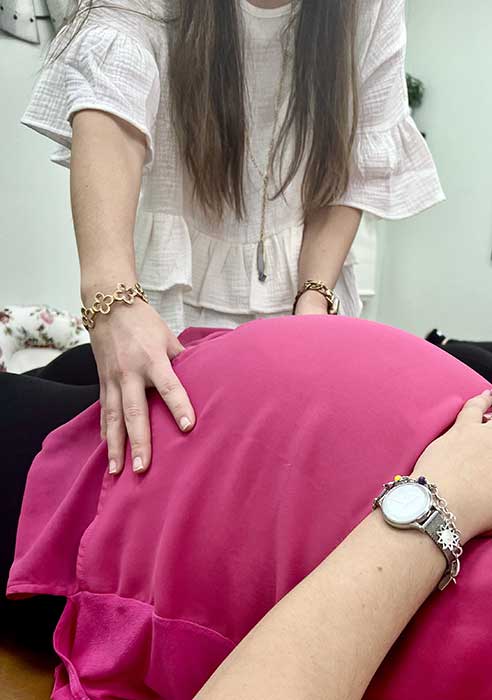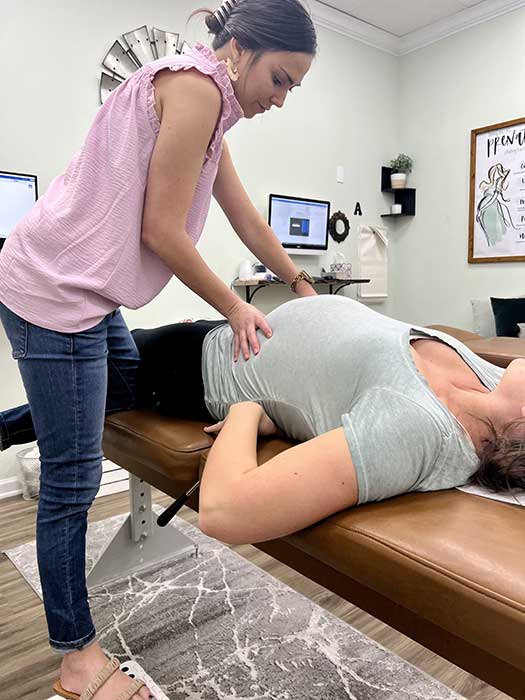
The Webster technique is a specific chiropractic analysis and diversified adjustment. The goal of the adjustment is to reduce the effects of sacral subluxation/ SI joint dysfunction. In so doing neuro-biomechanical function in the pelvis is improved.
Dr. Larry Webster, founder of the International Chiropractic Pediatric Association (ICPA), discovered this technique as a safe means to restore proper pelvic balance and function. It is a specific sacral analysis that can be used on all weight bearing individuals to determine S/I joint dysfunction/ sacral subluxation. The assessment includes heel flexion to buttocks, with restricted flexion indicating the affected SI joint. Correction is made with a diversified, sacral adjustment. It is used on all weight bearing individuals presenting with this biomechanical restriction. Common symptoms include (but are not limited to) low back pain, sciatic neuralgia, and symptoms associated with sacral subluxation and/ or S/I joint dysfunction.
The ICPA recognizes that in a theoretical and clinical framework of the Webster Technique in the care of pregnant women, sacral subluxation may contribute to difficult labor for the mother (i.e., dystocia). Dystocia is caused by inadequate uterine function, pelvic contraction, and baby mal-presentation. The correction of sacral subluxation may have a positive effect on all of these causes of dystocia.
In this clinical and theoretical framework, it is proposed that sacral misalignment may contribute to the three primary causes of dystocia via uterine nerve interference, pelvic misalignment and the tightening and torsion of specific pelvic muscles and ligaments. The resulting tense muscles and ligaments and their aberrant effect on the uterus may prevent the baby from comfortably assuming the best possible position for birth.
In regards to pregnant mothers, Dr. Webster reported that when a mother sought care and her baby was in a breech position, the restoration of pelvic neuro-biomechanics with this adjustment also frequently facilitated optimal fetal positioning. There are cases published in the chiropractic literature that support this theory. More research is needed and is currently underway by the ICPA.
The obstetric literature has determined that correct positioning of the baby in-utero affect birth outcome and decrease the potential for undue stress to the baby's developing spine and nerve system. Obstetric literature has determined the importance of normal pelvic neuro-biomechanics including uterine function and pelvic alignment for the prevention of dystocia (difficult birth). It has also determined that correct positioning of the baby in-utero affects birth outcome and decreases the potential for undue stress to the baby's developing spine and nerve system. Chiropractic literature has determined the significance of sacral adjustments in normalizing pelvic neuro-biomechanics.
It is therefore considered prudent that this specific sacral analysis and adjustment be used throughout pregnancy to detect and alleviate sacral imbalance and optimize pelvic neuro-biomechanics in the mother. Because of the particular female adaptations from the increase of hormones, weight gain and postural adaptations, pregnant mothers have a greater chance of sacral subluxation and neuro-biomechanical imbalance than the general population. Additionally, because of the effect the chiropractic adjustment has on all body functions by reducing nerve system stress, pregnant mothers may have significant benefit by having their spines checked regularly throughout pregnancy, optimizing health benefits for both the mother and baby.
For more information on the Webster Technique go to: http://icpa4kids.com/about/webster_technique.htm




